Technology
The Sports Facilities Companies Expands Ice Portfolio with 13 New Ice Properties and Two Community Centers
SFC assumes management of 15 facilities in 11 states through agreement with Rink Management Services CLEARWATER, Fla., May 22, 2025 /PRNewswire/ — The Sports Facilities Companies (SFC), the nation’s leading manager of sports, recreation, and event venues, has expanded its ice rink portfolio by assuming management of 13 ice rinks across 11 states, plus two […]
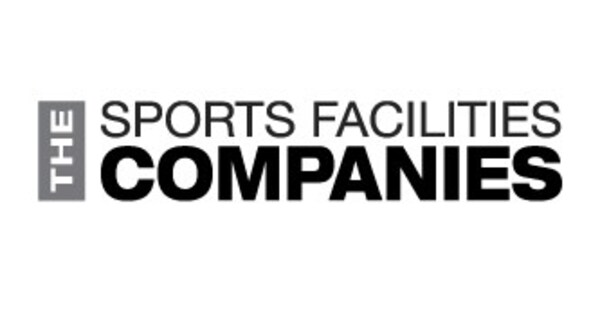
SFC assumes management of 15 facilities in 11 states through agreement with Rink Management Services
CLEARWATER, Fla., May 22, 2025 /PRNewswire/ — The Sports Facilities Companies (SFC), the nation’s leading manager of sports, recreation, and event venues, has expanded its ice rink portfolio by assuming management of 13 ice rinks across 11 states, plus two additional community centers. The facilities, previously operated by Rink Management Services (RMS), will now benefit from SFC’s expertise in operations, programming, and community engagement. Through the agreement, RMS operational leadership and staff will transition into the SFC network, enhancing its capacity to manage and elevate ice rinks nationwide.
“SFC continues to expand our presence as a leader in ice rink management, and this is an exciting step in that journey,” said Jason Clement, CEO of The Sports Facilities Companies. “RMS has built a strong footprint in the industry, and by integrating their experience with our proven approach to operations and community service, we are enhancing our ability to deliver exceptional outcomes for athletes, guests, and the communities we serve.”
Under the leadership of President Tom Hillgrove, RMS will maintain a small portfolio of leased agreements while SFC assumes management of the acquired facilities. Moving forward, the two companies will collaborate on strategic opportunities.
“We are excited to see these facilities transition to SFC, a company with a proven track record of success in community-focused facility management,” Hillgrove said. “RMS will continue to operate independently with our leased agreements while working alongside SFC to further strengthen the ice rink industry.”
SFC’s expanded portfolio of ice facilities and community centers now includes the following facilities:
- Bryant Park Winter Village Ice Rink – New York, N.Y.
- Lloyd Center Ice Rink – Portland, Ore.
- Metro Park Toledo Glass City Ice & Roller – Toledo, Ohio
- Wichita Ice Center – Wichita, Kan.
- Parks Mall at Arlington – Arlington, Texas
- Ice Skate USA Memorial City – Houston, Texas
- Ice in Paradise – Goleta, Calif.
- Breslow Ice Hockey Center – Lincoln, Neb.
- Waconia Ice Arena – Waconia, Minn.
- Industry City Ice Rink – New York, N.Y.
- Elevance Health Rink at Bicentennial Plaza – Indianapolis, Ind.
- Washington Harbour Ice Rink – Washington, D.C.
- McCormick Tribune Ice Rink – Chicago, Ill.
As part of the deal, SFC will also take over management of multiple non-ice facilities, including the Romulus Athletic Center in Romulus, Michigan, and the Safari Island Community Center in Waconia, Minnesota.
“We are thrilled to bring these facilities into the SFC family and continue our momentum as a leader in ice rink management,” said Kelly Kryukov, senior vice president of ice venue operations at The Sports Facilities Companies. “Ice rinks serve as vital community hubs—whether it’s for youth hockey, figure skating, or public skating sessions. Our focus is on elevating these venues by enhancing programming, improving operational efficiency, and ensuring they remain accessible and welcoming spaces for all athletes and families.”
With this expansion, SFC now manages 20 ice rinks nationwide including two large multi-sport venues featuring ice surfaces and two rinks in New York City. For more information about ice rink operations at The Sports Facilities Companies, visit icerinks.com.
About The Sports Facilities Companies
The Sports Facilities Companies (SFC) is the nation’s leading resource for the management and development of sports, recreation, wellness, and events facilities. As a turn-key solution for community leaders and developers alike, SFC services span the gamut of sports and recreation needs from sports tourism & recreation master planning, program planning, and feasibility through professional facility management services. With over 90 managed venues and approximately 4,000 team members, represented by the SF Network, SFC welcomes nearly 30 million guest visits and produces almost $1 billion in economic impact each year. To learn more, please visit SportsFacilities.com and theSFnetwork.com.
Press Contact:
Ashley Whittaker
7274743845
http://sportsfacilities.com
SOURCE The Sports Facilities Companies

Technology
Sports addict? Here’s how AI is bringing you closer to every second of action
ADVERTISEMENT Most of us have a sport that we just love to watch, whether it’s something more mainstream, such as football and Formula One (F1), or something slightly harder to access regularly, such as equestrianism, strongman or swimming. And while many super fans have been taking part in fantasy leagues or replaying their favourite goals […]
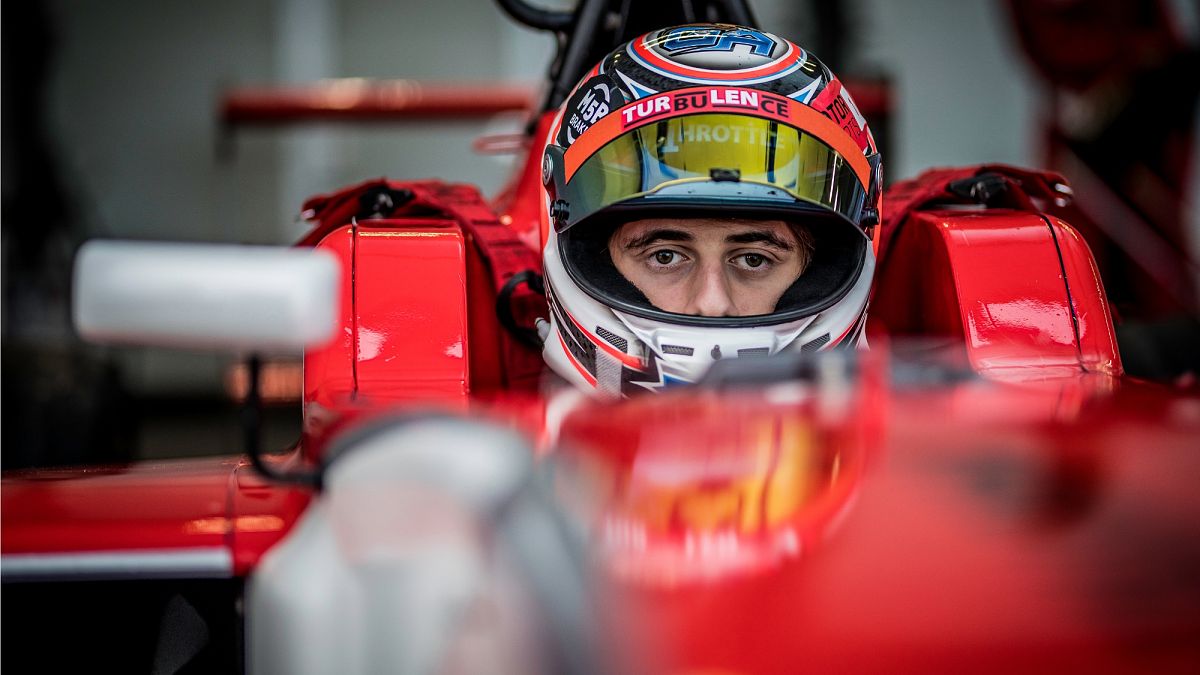
Most of us have a sport that we just love to watch, whether it’s something more mainstream, such as football and Formula One (F1), or something slightly harder to access regularly, such as equestrianism, strongman or swimming.
And while many super fans have been taking part in fantasy leagues or replaying their favourite goals online for years, generative artificial intelligence (Gen AI) is set to democratise the way we can all access, engage with, and enjoy our favourite sports.
Euronews Next spoke to Samira Panah Bakhtiar, General Manager of Media & Entertainment, Games, and Sports at Amazon Web Services (AWS), to find out how they’re helping fans get closer to the action.
F1 insights from inside the car
If you’ve ever watched F1, you probably enjoy the nail-biting speed, driver tactics, and listening in to the team radio – which can often provide comical moments.
Now, by ingesting over a million points of data during every minute of every race throughout a season, across the world, AWS has helped F1 up the viewer experience.
“As viewers are watching it, [AI] can help to predict the overtake rate of a driver against another driver,” Samira explained.
“Just recently, we announced a burn metre where they’re able to now assess how much gasoline is being burned based off the velocity of a driver in any given moment across a turn, or in the case of an overtake. And then they have that burn metre of their gas stack ranked, and that obviously makes a difference in the race”.
In the same way, Germany’s Bundesliga is using AI to calculate the probability of a goal or the speed and velocity of a kick. Fans can access the stats on their app and the Bundesliga has reported an increase in app engagement by 68 per cent.
Lower emissions, more sport
AWS have also worked closely with the European Football League (ELF) to help them streamline their coverage production. Whilst that might just sound like industry lingo, the knock-on effect for football fans is huge, and could be replicated across all sports.
By using the cloud for live sport coverage production, the ELF have reduced the need to transport editors, graphic artists and other crew onsite for events. While this might be less fun for the crew, it massively reduces transport emissions and saves costs.
Across an entire season of games, it was estimated to have saved over 300 tonnes of CO2 emissions. That’s the equivalent of the amount of energy just 40 average homes would use in a year.
“And by democratising the cost of it, you’re able to cover more sports,” Panah Bakhtiar told Euronews Next.
“So we’ve seen a lot of our customers who could traditionally only afford to cover, let’s just call it, tier one events for a full calendar year, now be able to cut the cost down, and then be able to send more people to tier two or tier three sporting events to provide more options”.
With this in mind, it could mean more money available to increase content around less popular sports.
“I grew up riding horses, I love watching equestrians. There’s not a lot of equestrian content out there, but being able to now know that I can find the content that I care about watching when I want to watch it, and the cost for production is coming down, it allows for more choice. I think that’s a really beautiful thing,” Panah Bakhtiar said.
The future of entertainment and sport
She is particularly excited about what AI means for the future of entertainment and fan engagement.
“Gen Z, 47 per cent of them prefer social media and short-form content over that of traditional linear content or streaming content. Actually, their number two preference after social is gaming. And then after that, it’s audio and music.
“So I think the interesting part for me has been seeing how these demographics are creating a lot of volatility, but if you pay attention, the opportunity is quite vast.
“I think last year alone, the entertainment industry generated over a trillion dollars in revenue, with 35 per cent of that coming from online video and 25 per cent of it coming from games, and it’s only growing”.
Panah Bakhtiar thinks that for companies that are willing to be experimental with new products and embrace the use of cloud computing, artificial intelligence and purpose-built services that focus on game or content development, the whole entertainment landscape could be completely reinvented.
“My prediction for the future of entertainment is that it’s multi-dimensional, it’s highly personalised and it’s extremely interactive,” she said.
Technology
Xiaomi Smart Band 10 launches globally as new affordable fitness tracker
Xiaomi has recently made the Smart Band 10 available to the Chinese market, and now, the affordable fitness tracker has made its global debut. As recent leaks have suggested, the special Ceramic Edition of the wearable is also making its way to the international market, which is a first, as this version of the predecessors […]
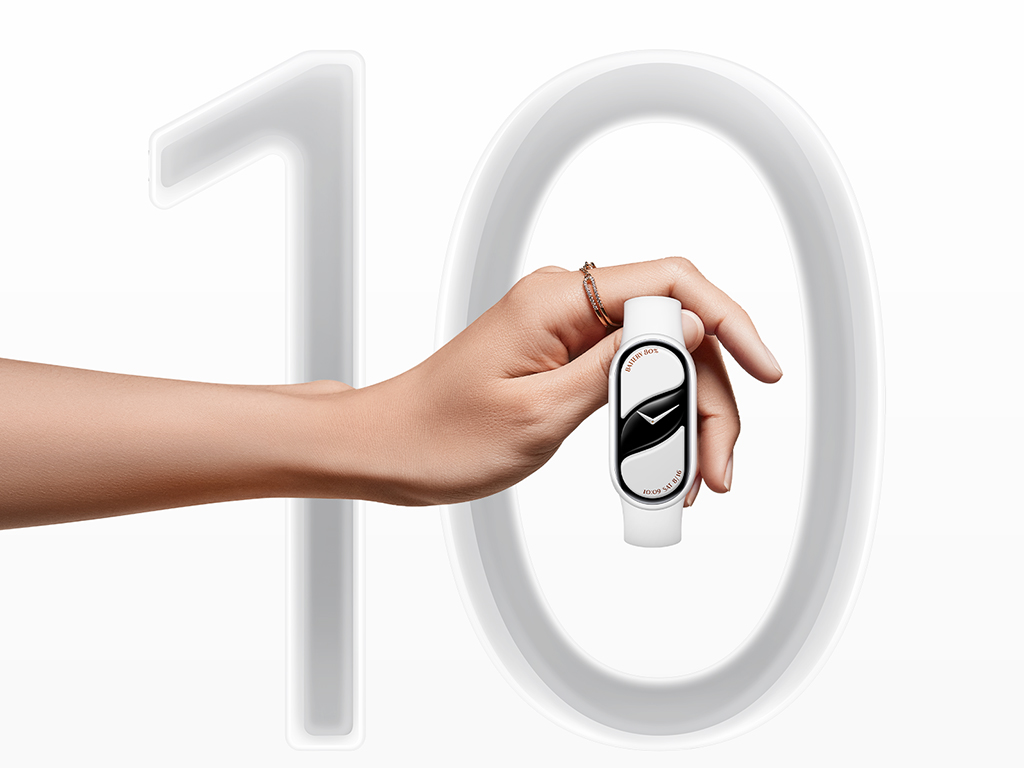
Xiaomi has recently made the Smart Band 10 available to the Chinese market, and now, the affordable fitness tracker has made its global debut. As recent leaks have suggested, the special Ceramic Edition of the wearable is also making its way to the international market, which is a first, as this version of the predecessors remained exclusive to China.
Compared to the last-gen model, the Smart Band 10 comes with a larger display, sized 1.72 inches. The predecessor, in comparison, features a 1.62-inch screen. Besides being larger, the AMOLED panel on the latest model also has a higher brightness rating, with a peak brightness rating of 1,500 nits.
While the screen has seen an upgrade, the rated battery life remains the same as the predecessor (available on Amazon). To be specific, the Smart Band 10 is rated for up to 21 days of runtime. However, Xiaomi highlights that sleep monitoring has seen an upgrade, and the new wearable comes with a personalized sleep guidance feature to enhance users’ sleeping habits.
The Smart Band 10 can measure other health metrics as well. Xiaomi claims that the new wearable can offer 24/7 accurate heart rate and SpO2 monitoring. It can also measure the stress level.
When it comes to fitness tracking, the Xiaomi Band 10 has over 150 sports modes, including an advanced swimming mode, which can offer real-time heart rate monitoring during sessions.
Other highlights of the fitness tracker include 5 ATM water resistance, over 200 watch faces, and slim 2 mm symmetrical bezels. The launch price of the Xiaomi Smart Band 10 in the EU is €49.99, while the Ceramic Edition goes for €59.99. Unlike the Chinese variant, it seems that the global market won’t get an NFC version.

Abid’s journey as a technophile began when he first assembled his PC. Since then, his insatiable curiosity has driven him to delve into every aspect of this rapidly evolving technological landscape. And as a tech reporter, he prioritizes transparency, accuracy, and unbiasedness.
Technology
Lottery.com Announces $10 Million Acquisition of GXR World Sports Assets
FORT WORTH, Texas, June 26, 2025 (GLOBE NEWSWIRE) — Lottery.com Inc. (NASDAQ: LTRY, LTRYW), a leading technology company transforming the intersection of gaming, sports and entertainment, today announced it is advancing its global expansion with the planned launch of the Sports.com Super App (the “Super App”)—a first-of-its-kind digital destination for sports fans worldwide. The Super […]


FORT WORTH, Texas, June 26, 2025 (GLOBE NEWSWIRE) — Lottery.com Inc. (NASDAQ: LTRY, LTRYW), a leading technology company transforming the intersection of gaming, sports and entertainment, today announced it is advancing its global expansion with the planned launch of the Sports.com Super App (the “Super App”)—a first-of-its-kind digital destination for sports fans worldwide. The Super App is designed to combine live streaming, social engagement, e-commerce and gamification into a single immersive ecosystem.
The Super App, which is scheduled to launch in select global markets in Q3 2025, will initially focus on soccer and motorsport—two verticals Sports.com has been aggressively expanding into through a series of high-profile sponsorships and strategic initiatives. The Super App will be built on an existing platform development by Galaxy Racer Holdings Limited (“GXR”), The GXR app has achieved more than one million monthly active subscribers organically, demonstrating significant early traction and category-defining potential.
“We’ve spent the past two years building Sports.com around key pillars like soccer and motorsport,” said Mark Bircham, Director of Sports.com. “This acquisition and the launch of the Sports.com Super App is the culmination of a precise strategy to consolidate fragmented sports experiences. Our partnerships with emerging motorsport stars like Callum Ilott, Louis Foster, and Sebastian Murray, along with this technology acquisition sets the stage for an aggressive media expansion that will redefine how fans watch, play and engage with their favorite leagues, teams, and players.”
The Super App will integrate six primary features into a single experience: live streaming, community chat hubs, stats-based social media, e-commerce, real-money and fantasy sports gaming, and sports news. The Super App aims to engage fans across the full lifecycle of the sports experience, tapping into the 4–5 hours of average fan interaction beyond match time each week.
Revenue streams will include premium streaming subscriptions, in-app advertising, merchandising and interactive gamified challenges. Plans are underway to extend into additional sports verticals and incorporate immersive streaming experiences later this year.
To accelerate the development timeline for the Super App, Lottery.com has signed a Letter of Intent (LOI) to acquire a 51% controlling interest in the sports and technology assets of GXR, valuing the transaction at $10 million pre-money. Subject to due diligence and final agreement, the deal allows Lottery.com to fund the $5.1 million initial investment via cash, stock, or a combination at a fixed $3.00 share price. A $15 million financing commitment has also been pledged by Lottery.com to fuel expansion of the Sports.com Super App.
All GXR unencumbered assets, including its tech stack and user base, will be transferred to a new entity (NewCo), of which Lottery.com will initially own 51%. The agreement includes a call option to acquire 100% ownership of NewCo by the end of 2027. Exclusivity has been secured through June 30, 2025, with an automatic 30-day extension, and closing is anticipated on or before August 1, 2025.
“This is a transformational moment for the worldwide sports media ecosystem,” said Paul Roy, Founder and CEO of GXR. “Together with Lottery.com and Sports.com, we are developing the world’s first true sports super app. As global licensing discussions advance, and integration with the Lottery.com family of brands begins, we see a future where fans control their entire live event experience—on the Super App, across all screens, in every corner of the globe.”
About Lottery.com
The Lottery.com Inc. (NASDAQ: LTRY, LTRYW) family of brands — including Sports.com, Tinbu and
Technology
Xiaomi launches its new budget tracker, the Xiaomi Smart Band 10
TL;DR Xiaomi has revealed all about the newly launched Xiaomi Smart Band 10. The device debuts with a 1.72-inch display, AI-powered fitness tracking, heart rate broadcasting, and deeper integration across Xiaomi’s ecosystem. Pricing for the Xiaomi Smart Band 10 starts at $49.90 in global markets. After weeks of leaks and speculation, Xiaomi has officially pulled […]
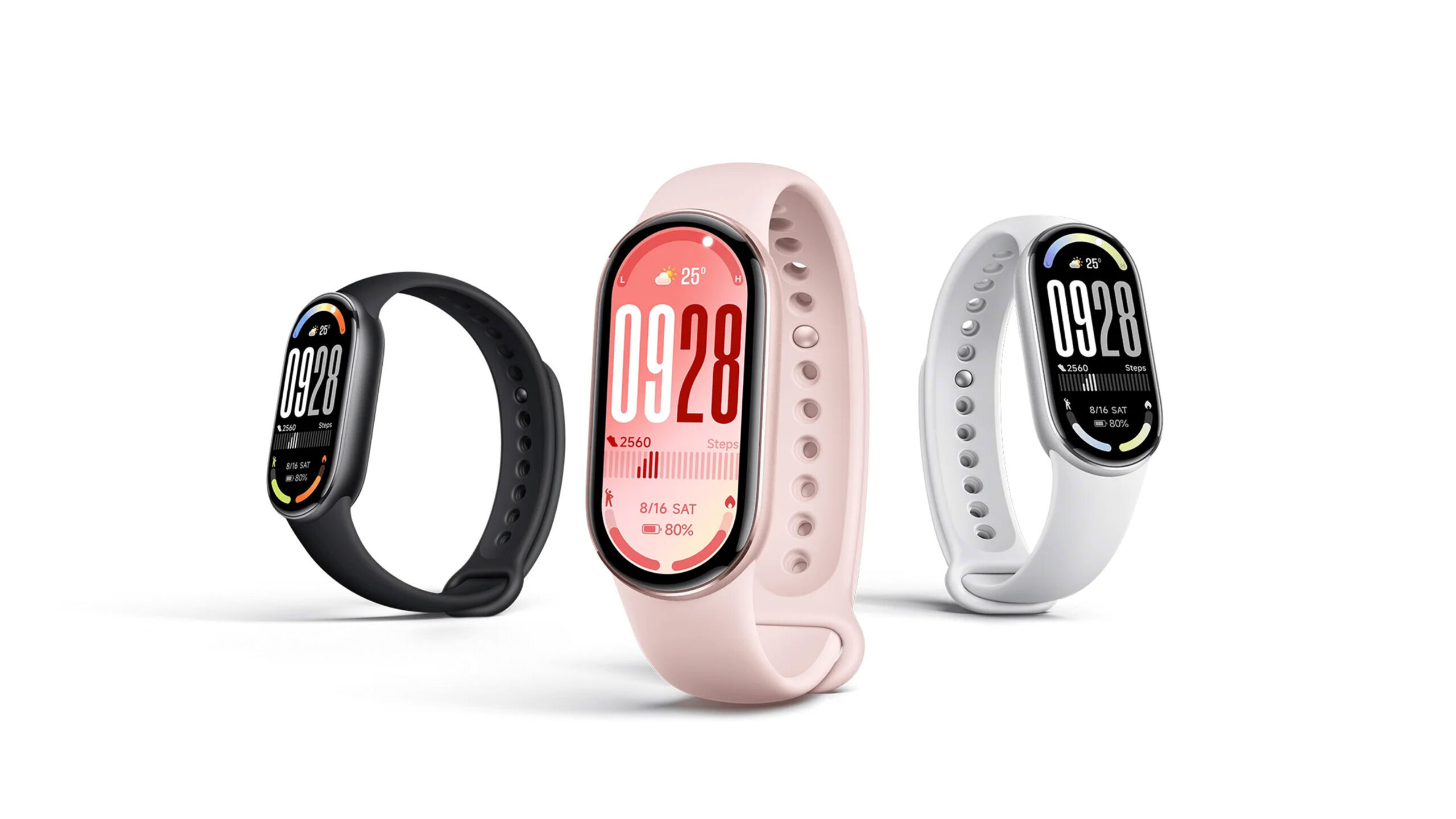

TL;DR
- Xiaomi has revealed all about the newly launched Xiaomi Smart Band 10.
- The device debuts with a 1.72-inch display, AI-powered fitness tracking, heart rate broadcasting, and deeper integration across Xiaomi’s ecosystem.
- Pricing for the Xiaomi Smart Band 10 starts at $49.90 in global markets.
After weeks of leaks and speculation, Xiaomi has officially pulled back the curtain on the Smart Band 10, the latest addition to its wildly popular fitness tracker lineup. The new wearable features key design tweaks, upgraded fitness tracking features, and deeper integration with Xiaomi’s growing ecosystem. Up front, the tenth-generation band boasts a larger 1.72-inch AMOLED display, thanks to narrower (and now symmetrical) bezels. Combined with the screen’s 1,500 nits peak brightness and a 60Hz refresh rate, that should translate to more vibrant visuals and smoother interactions.

According to the product page on Xiaomi’s website, the device is available in three metallic finishes of Midnight Black, Glacial Silver, and Mystic Rose, or as a premium ceramic edition in white. However, the company’s press release also mentions a green metallic option as well as additional ceramic variants. Regional availability may vary. All builds can be paired with a broad range of strap materials, ranging from fluororubber to leather to a knitted silk band. The tracking pill can also still be worn beyond the wrist, including on the new metallic pearl chain available for wearing the device as a pendant. Users can also personalize the device with a large selection of watch faces, including designs featuring mini-games.
The tracker retains the line’s design and can be paired with a variety of band materials or even worn beyond the wrist.
As far as fitness tracking capabilities are concerned, the band builds on its predecessors with a new 9-axis motion sensor, more than 150 workout modes, AI-powered training tools, and key upgrades in line with growing market trends. Users can expect personalized recovery plans and adaptive insights, swim stroke detection, on-wrist running guidance, and enhanced sleep detection. The Xiaomi Smart Band 10 is also the first in the series to support heart rate broadcasting, making it a more capable companion for serious athletes dependent on connected fitness apps.

For users already embedded in Xiaomi’s ecosystem, the Smart Band 10 also offers tighter device integration. From their wrists, users will be able to control a wide range of products, including everything from tablets to thermostats. Xiaomi also announced a modular desktop dock that can act as both a speaker and a smart alarm hub. Meanwhile, the band features a battery life claim of up to 21 days to provide plenty of usage between charges. With the always-on display enabled, that spec is cut down to 9 days.
Despite added features and a larger display, the Smart Band 10 still boasts up to 21 days of battery life.
The Xiaomi Smart Band 10 starts at $49.90 in global markets. Xiaomi says the wearable will be available in Europe, Latin America, the Middle East, Southeast Asia, and several other locales. For what it’s worth, the wearable costs 269 yuan (~$37) in China for the standard metal model, while the NFC-enabled version is priced at 319 yuan (~$44). The top-tier ceramic edition comes in at 379 yuan (~$52).
Technology
Valorant Masters 2025 Showcases Web3’s 50% Revenue Boost in Esports
The Valorant Masters 2025 tournament has achieved unprecedented milestones in the esports industry, attracting a massive audience and participation. The event showcased the latest advancements in Web3 technology, demonstrating the transformative potential of blockchain and decentralized platforms in competitive gaming. The integration of Web3 elements, such as non-fungible tokens (NFTs) and decentralized finance (DeFi), has […]
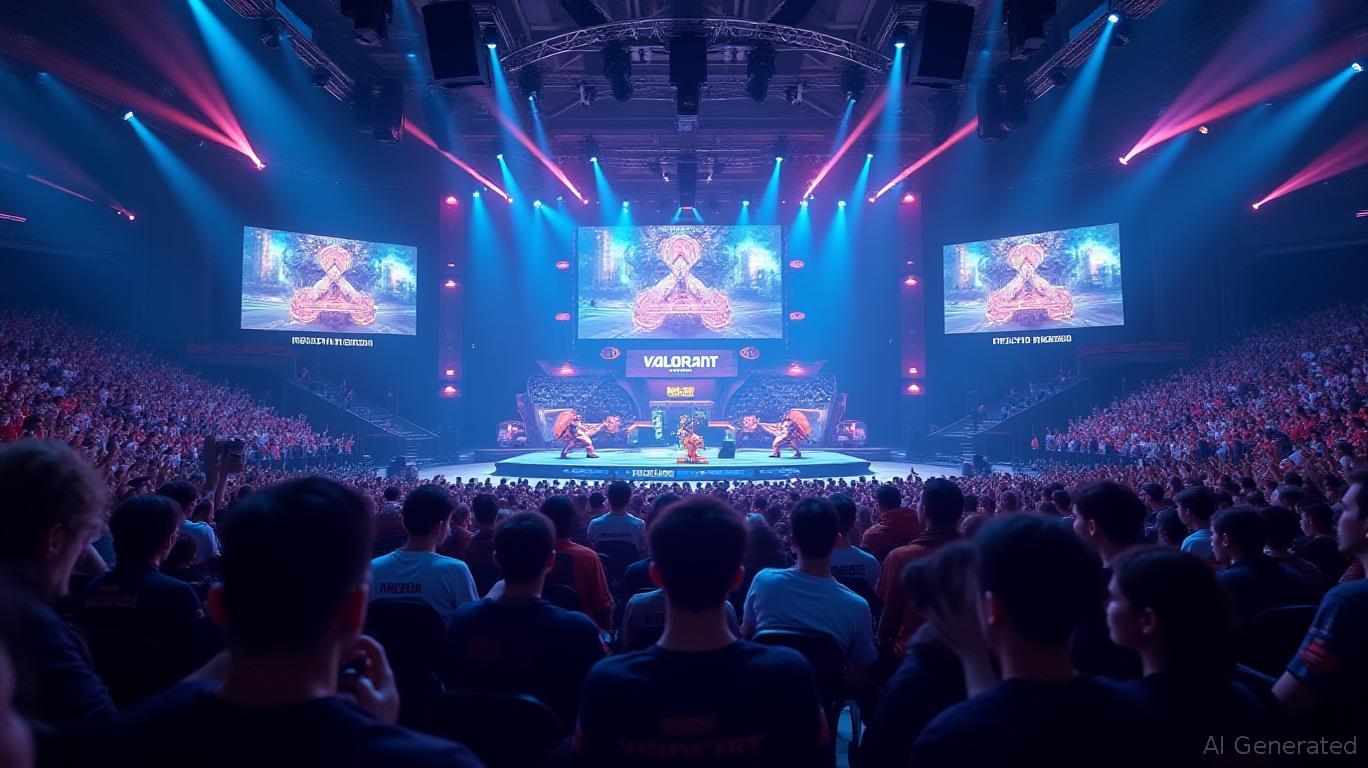
The Valorant Masters 2025 tournament has achieved unprecedented milestones in the esports industry, attracting a massive audience and participation. The event showcased the latest advancements in Web3 technology, demonstrating the transformative potential of blockchain and decentralized platforms in competitive gaming. The integration of Web3 elements, such as non-fungible tokens (NFTs) and decentralized finance (DeFi), has significantly enhanced the fan experience and opened new avenues for revenue generation and community engagement.
The tournament featured a diverse lineup of teams from around the world, each competing for the top spot in the competitive Valorant scene. The intense matches and strategic gameplay captivated audiences, with viewers tuning in from various regions to witness the action. The event’s success can be attributed to the seamless integration of Web3 technology, which allowed fans to engage with the tournament in innovative ways. For instance, fans could purchase exclusive NFTs, participate in DeFi staking pools, and even vote on in-game decisions, creating a more immersive and interactive experience.
The impact of Web3 on the esports industry is undeniable. By leveraging blockchain technology, esports organizations can create more transparent and secure ecosystems, ensuring fair play and protecting the interests of both players and fans. The decentralized nature of Web3 also enables greater community involvement, as fans can directly influence the direction of their favorite teams and tournaments. This shift towards a more decentralized model is expected to drive further innovation and growth in the esports sector, as organizations continue to explore the potential of Web3 technology.
The Valorant Masters 2025 tournament serves as a testament to the evolving landscape of esports, where technology and community engagement are at the forefront. As Web3 continues to shape the future of competitive gaming, it is clear that the industry is poised for significant growth and transformation. The success of this event underscores the importance of embracing new technologies and fostering a more inclusive and interactive fan experience. With the continued integration of Web3 elements, the esports industry is set to reach new heights, attracting a broader audience and creating more opportunities for players, teams, and fans alike.

Technology
Why are youth sports so expensive?
The U.S. has been the largest importer of sporting goods since 2010, accounting for 31% of the world’s imports in 2022. Youth sports are a big part of Karli Casamento’s life. Her son, Jax, 15, golfs and plays on three baseball teams. Her youngest son, Colt, 7, plays baseball and basketball. The costs, especially for […]

The U.S. has been the largest importer of sporting goods since 2010, accounting for 31% of the world’s imports in 2022.
Youth sports are a big part of Karli Casamento’s life. Her son, Jax, 15, golfs and plays on three baseball teams. Her youngest son, Colt, 7, plays baseball and basketball.
The costs, especially for Jax, add up in a hurry. That’s why Casamento, 48, and her husband, Michael, 46, are watching closely for the ramifications of tariffs on their rising youth sports budget.
“All of their equipment I’m sure comes from China,” said Karli Casamento, a second-grade teacher in suburban Philadelphia. “As they get bigger, they need new equipment. So that is definitely a concern.”
For families like the Casamentos and businesses in the marketplace, there is continued uncertainty surrounding the possible effects of President Donald Trump’s tariffs — the 10% baseline tariffs, along with a 30% rate on Chinese goods — on youth sports.
Nike, Adidas, Under Armour and Puma were among 76 companies that signed an April 29 letter to Trump asking for a footwear exemption from reciprocal tariffs. The Footwear Distributors & Retailers of America letter warned tariffs would “become a major impact at the cash register for every family.”
Amer Sports, the parent company of Wilson Sporting Goods and Louisville Slugger, downplayed the effect of tariffs when it announced its first-quarter earnings on May 20. But looking beyond this year, chief financial officer Andrew Page mentioned pricing as one way the company could offset higher import tariffs.
Dick’s Sporting Goods reaffirmed its earnings guidance for 2025 when it provided its first-quarter update on May 28. CEO Lauren Hobart said Dick’s had no plans to trim its product assortment in response to tariff costs, and that its guidance confirmation was based on its belief it can manage the situation.
“We are constantly assessing our pricing down to the item level, SKU level, and we do that based on consumer demand and the profitability of the business,” Hobart said in response to a question on possible price increases. “We have a very advanced pricing capability, much more advanced than we used to have, and much more enabled to make real time and quick decisions.”
Many of the US’s most popular sports rely on imported equipment
The U.S. has been the largest importer of sporting goods since 2010, accounting for 31% of the world’s imports in 2022, according to a 2024 World Trade Organization report. Boosted by racket sports, China is the most significant exporter of sporting goods at 43% in 2022.
Fueled by golf, badminton and tennis equipment, Vietnam and Taiwan experienced rapid expansion in exporting outdoor sports equipment to the U.S. from 2018 to 2024, according to data from the consulting firm, AlixPartners. Vietnam increased 340% to $705 million, and Taiwan was up 16% to $946 million.
Tariffs of 46% for Vietnam and 32% for Taiwan could go into effect next month after a 90-day pause.
Hockey skates, sticks and protective gear are often imported. Same for baseball gloves and composite and aluminum bats, which are often imported or use materials that are imported, according to the National Sporting Goods Association. Soccer goals, lacrosse nets and cones are often sourced from low-cost labor markets.
“You can’t get around the fact that a lot the stuff that we use in youth sports is coming from abroad,” said Travis Dorsch, the founding director of the Families in Sport Lab at Utah State University. “So surely if the tariffs go into effect and in any long-term or meaningful way, it’s going to affect youth sports.”
The Casamento family cheers for the Philadelphia Phillies, and that’s how Jax and Colt got into baseball. Karli Casamento called sports “a safe way to socialize, and it gets them active.”
But equipment has become a major expense for the family. Jax has a $400 bat and a $300 glove, Karli Casamento said, and his catching equipment is $700. There is an additional cost for registration for his travel team, in addition to what it costs to travel to tournaments.
“We’ve tried to say to Jax, ‘Well, you’re in ninth grade now, do you really need to play tournament ball? You’re not going to grow up and be, you know, the next Mike Schmidt,’ things like that,” Karli Casamento said, “because it’s just, it’s $5,000 a year and now we have two kids in sports.”
Tariffs may not impact all sports families equally
That effect most likely will be felt by middle- and low-income families, threatening recent gains in participation rates for youth sports.
The Sports & Fitness Industry Association, which tracks youth participation by sport, found in 2023 there was a 6% increase in young people who regularly participated in a team sport, which it said was the highest rate (39.8%) since 2015. An Aspen Institute study released in October showed participation for girls was at its highest levels since at least 2012.
“I’m really concerned that we’re going to spike this great momentum because families, who are already saying that sports is getting increasingly more expensive, equipment’s getting more expensive and they’re continuing to stretch to make that work, like this might be the one that just kind of puts them over the sidelines,” said Todd Smith, the president and CEO of the Sports & Fitness Industry Association.
Smith was in China in April for a World Federation of Sporting Good Industries board meeting. He visited some manufacturing facilities while he was in the country.
“The ones that I went to are really, really impressive,” Smith said. “First class, high tech, like highly skilled. And the thought that tariffs are all of a sudden just going to allow a 10-plus million dollar facility to just pop up the next day in the U.S. is just, it’s not feasible.”
Low-income families were already feeling a financial strain with youth sports before Trump was elected to a second term. According to the Aspen Institute study, 25.1% of children ages 6-17 from households earning under $25,000 played a sport on a regular basis in 2023, down slightly from 25.8% in 2022. That’s compared to 43.5% of children from households earning at least $100,000, up slightly from 42.7% in 2022.
Youth sports participation has a wide range of ramifications for public health, said Tom Farrey, the founder and executive director of the Aspen Institute’s Sports & Society Program.
“This incredibly virtuous cycle can be engaged if you can simply get kids off their phones and off their couches and into the game and they have a sustained experience into adolescence,” Farrey said. “And if you don’t, then you’re at risk for a range of health consequences, including obesity.”
Going along with playing on three baseball teams, Jax Casamento has workouts for his travel squad and also takes hitting lessons. The Casamentos turned a baseball trip to South Carolina into a family vacation last year.
Michael Casamento is a physical education teacher in an elementary school, so the family’s concerns about the effect of tariffs on the cost of youth sports go beyond their two boys.
“I work with a lot of kids that are a lower socio-economic status,” Karli Casamento said. “It really makes it harder for those types of families to be able to afford to play sports.”
Copyright 2025 Associated Press. All rights reserved. This material may not be published, broadcast, rewritten, or redistributed.
-

 Motorsports2 weeks ago
Motorsports2 weeks agoNASCAR Weekend Preview: Autódromo Hermanos Rodríguez
-

 Motorsports2 weeks ago
Motorsports2 weeks agoNASCAR Through the Gears: Denny Hamlin has gas, a border needs crossing, and yes, that’s a Hemi
-

 Professional Sports3 weeks ago
Professional Sports3 weeks agoUFC 316
-

 High School Sports3 weeks ago
High School Sports3 weeks agoHighlights of the Tony Awards
-

 Motorsports2 weeks ago
Motorsports2 weeks agoNASCAR Race Today: Mexico City start times, schedule and how to watch live on TV
-
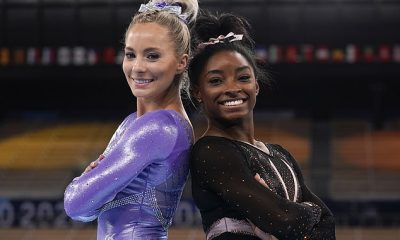
 Health2 weeks ago
Health2 weeks agoGymnast MyKayla Skinner Claims Simone Biles 'Belittled and Ostracized' Her amid Riley …
-

 College Sports3 weeks ago
College Sports3 weeks agoFisk to discontinue history-making gymnastics program after 2026 | Area colleges
-

 Sports2 weeks ago
Sports2 weeks agoCoco Gauff, The World's Highest
-

 NIL2 weeks ago
NIL2 weeks agoTennessee law supersedes NCAA eligibility rule
-
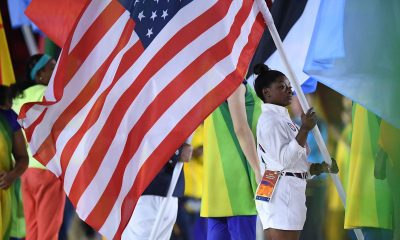
 Health3 weeks ago
Health3 weeks agoOlympic great Simone Biles shares mental health journey on first Hong Kong visit



































